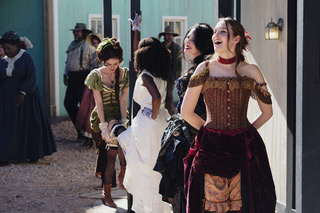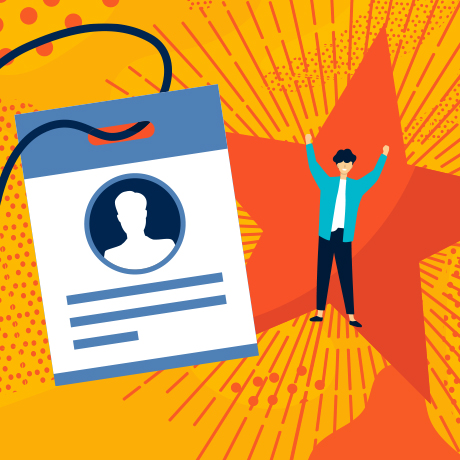We’re living in the experience economy, where consumer preferences are shifting from material things to experiences. In the B2B world, where events can sometimes be standardized affairs, savvy marketers know that standout experiences are the best way to cut through the noise and inspire word-of-mouth promotion.
Today, we’ll focus on one specific aspect of event marketing—experiential marketing—and explore what it means for advocate marketers.
Experiential marketing is a strategy where brands offer something unique, unexpected and delightful to the participant—something that helps them forge an emotional connection to the brand.
From guerilla marketing tactics to flash mobs to ever-more-creative interactive installations at conferences, experiential marketing was named one of the hottest event marketing trends for 2019— and it’s here to stay.
In this blog, we’ll look at why an investment in experiential marketing is worthwhile, plus we’ll share some fascinating examples, as well as 4 practical tips for infusing customers into your experiential marketing strategy.
Why experiential marketing?
Experiential marketing is well worth the investment for any B2B company running events.
Why? First of all, experiences are simply an effective way to get your message across. Educator Edgar Dale’s famous “Cone of Experience” states that we only remember 10% of what we read, 20% of what we hear, and 30% of what we see. But, we remember 90% of what we personally experience.
We also see the buying experience becoming more important than ever before in the B2B world. The fastest-growing B2B companies (Slack is one great example) understand this and make sure to provide consumer-quality user experiences. In his research The Birth of the B2B Consumer, Steven Casey from Forrester notes how it has become imperative that B2B companies make sure their brand resonates with prospects emotionally and creates the right first impression.
What’s more, a study by the Event Marketing Institute found that a whopping 98% of consumers feel more inclined to purchase after attending an experiential brand activation
Here’s yet another reason why you should consider experiential marketing in your event strategy: the power of social. Many people, especially millennials, love to capture and share Instagrammable moments.
Facebook (Instagram’s parent company) understands this better than anyone else—at their IQ Live event series, for example, they put their guests in the spotlight and hired a latte artist to draw their faces in foam to highlight their unique identities and make them feel like VIPs!

This one-of-a-kind experience created a ton of social buzz that lived on past the event (Image from Margarita Corporan as it appears on BizBash)
4 intriguing examples of experiential marketing at events
Here’s a roundup of some of the most interesting recent examples of experiential marketing at events that we’ve come across.
1. LG’s stunning “digital canyon”
At the annual Consumer Electronics Show, LG created a “digital canyon” by piecing together hundreds of state-of-the-art curved OLED TV displays. Attendees could walk through a passageway and admire the stunning natural vistas shown entirely on LG screens.
2. HBO’s Westword replica theme park
For South By Southwest, HBO created an entire temporary theme park to replicate the set of the popular TV show Westworld. Special shuttles whisked curious guests to a secret location where the buildings, costumed actors, and props recreated an American frontier town just like the town of Sweetwater from the show.

This immersive Westworld set wowed event attendees (Image from HBO as it appears on Business Insider)
3. Dockercon’s 5000-person live multiplayer video game
At DockerCon, software company Docker’s annual conference, the audience bounced a plastic whale around the room during a keynote speaker’s session to control the game’s characters on the main screen. Billed as the first 5000-person live multiplayer video game, this experience was massively popular and provided a unique talk trigger for the conference.
4. Anheuser-Busch’s immersion zones
At beer company Anheuser-Busch’s 2018 sales conference that was attended by over 5000 people, attendees were treated to a welcome parade in the center of New Orleans, as well as an “immersion zone” that featured distinct experiences for each of the brewer’s brands. Bud Light World, for example, was a replica castle featuring characters from the brand’s recent medieval-themed marketing campaign, complete with thrones for Instagram ops.
4 ways you can get your customer advocates involved in your event
If your brand is going to undertake experiential marketing, it’s a golden opportunity to get customer advocates involved. Here are 4 ways you can do that:
1. Get advocates involved in the planning or ideation stages.
Show your best customers you value them by baking their feedback and ideas into the experiential marketing game plan. For example, ask them what would make the event truly special. Or simply what they want to eat for lunch, or what music to play between sessions. Your event is much more likely to be successful if it takes their input into account and positions customer needs at the center of your event.
2. Give them preferential access or early access.
This is a no-brainer. If you’re going to be setting up an incredible experience, make sure your customer advocates get the best and earliest version. This creates a positive customer experience from the onset of the event journey and helps nurture your community of advocates by showing them they’re part of your company’s inner circle.They’ll also be the first and most likely to promote it on social when they feel like VIPs!
3. Offer exclusive VIP perks.
At the annual VMworld event with 22,000 attendees, VMware delights their customer advocates—referred to as their Champions— with a VIP lounge that gives them an exclusive space to relax, collect swag, and meet members of the VMware team. They even had the VMware CEO, Pat Gelsinger, stop by to meet Champions in person,providing a personalized touch to the experience.
4. Craft exclusive experiential marketing experiences for your top advocates.
ADP does this at their annual customer event, Meeting of the Minds, by selecting their top customers through AdvocateHub data and treating these advocates to special moments of delight, like special seating, private networking sessions and opportunities to meet keynote speakers and ADP leadership team members. (Read more about ADP’s winning events strategy here.)
Taking your event marketing and customer marketing strategies to the next level
If you’re a customer marketer who works with your organization’s events team, it’s well worth brainstorming some possibilities for involving your customers in experiential marketing. For example, if you ask them what they believe would make the event remarkable, then you could find yourself sourcing some of the most creative ideas directly from them.
There’s no doubt that setting up thoughtful and relevant experiential marketing installations takes extra effort. But if your goal is to create word-of-mouth promotion, lasting memories and a positive association between your brand and your attendees, it’s a tactic well worth investing in.
















































